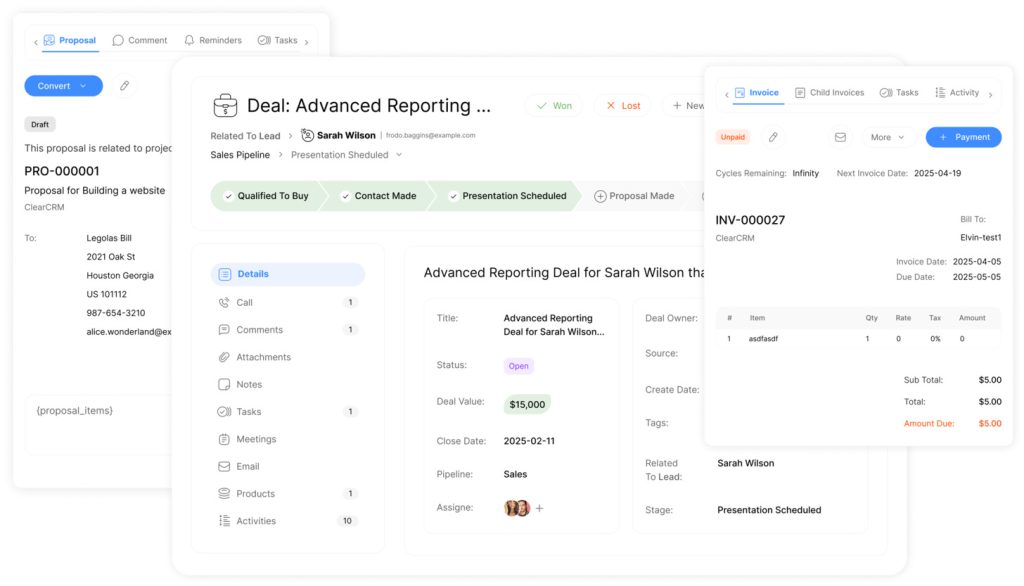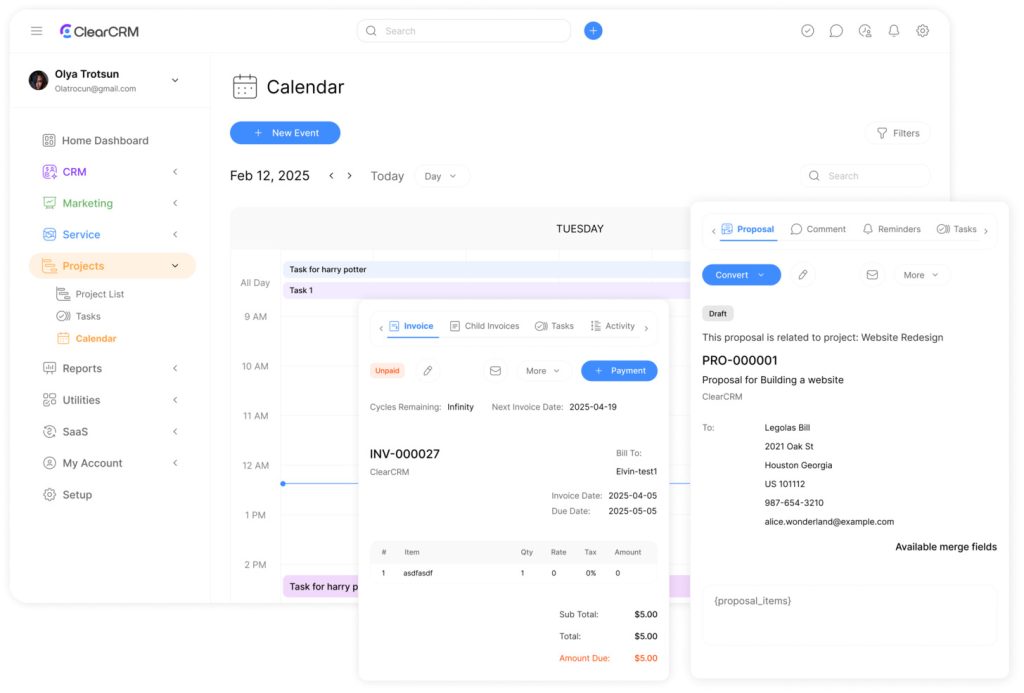Generate Standard Reports with Ease: Expert How-To Guide

Businesses thrive on clear insights. ClearCRM’s pre-built report templates simplify data analysis, turning raw numbers into actionable strategies. These tools let teams review sales trends, customer activity, or tax balances without manual formatting. With flexible access via dashboards or dedicated pages, users adapt reporting to their workflow.
Effective reporting balances summary overviews and granular details. A sales manager might analyze monthly revenue totals first, then drill into product-level performance. Role-based permissions ensure teams see only relevant data—accounting teams access financial statements, while service teams monitor support tickets.
Platforms like NetSuite and Zuora demonstrate real-world applications. NetSuite’s audit trails track inventory changes, while Zuora’s billing summaries clarify subscription metrics. Such features eliminate guesswork in financial reviews or customer retention efforts.
This guide tackles common challenges: organizing scattered data, maintaining report consistency, and interpreting complex results. Readers will learn to customize date ranges, filter irrelevant items, and automate recurring analysis. Practical examples show how to transform generic templates into decision-ready assets.
Key Takeaways
- Pre-built templates save time while maintaining data accuracy
- Customizable access levels protect sensitive financial details
- Drill-down features connect high-level trends to specific transactions
- Automated scheduling ensures timely delivery of critical updates
- Real-world platforms prove adaptable reporting drives better decisions
Introduction to Standard Reports
Structured data analysis drives modern business decisions. Predefined report formats turn raw numbers into clear pathways for action. These templates range from high-level overviews to transaction-level breakdowns, offering flexibility for teams reviewing financial health or customer engagement.
Common templates fall into two categories: summary snapshots and granular records. A summary might show monthly revenue totals, while detailed versions reveal individual product performance. Accounting teams often use balance sheets, while service departments track ticket resolution rates.
“NetSuite’s predefined financial statements reduce reconciliation time by 40% for mid-sized enterprises.”
User permissions shape what teams see. Marketing leads access campaign metrics, while HR managers view payroll summaries. This role-based filtering ensures sensitive data stays protected without limiting operational visibility.
Platforms like Zuora demonstrate how report definitions align with real-world needs. Subscription billing summaries help track recurring revenue, while inventory audits prevent stock discrepancies. These tools eliminate manual calculations, letting teams focus on strategy.
Later sections will explore custom filters, automated scheduling, and cross-departmental data sharing. Readers will learn to transform generic outputs into tailored assets for smarter resource allocation.
Understanding the Benefits of Standard Reports

Predefined analytics formats accelerate insight generation for time-sensitive strategies. Organizations gain immediate visibility into operations through structured templates that balance depth with digestibility. This approach reduces time spent reconciling spreadsheets while maintaining compliance.
Key Advantages for Businesses
Operational clarity emerges when teams access unified dashboards showing real-time metrics. Filtering tools let users isolate specific date ranges, product lines, or customer segments. A retail chain might track holiday sales spikes while excluding seasonal clearance items.
“Automated financial summaries cut monthly closing processes from 10 days to 48 hours for our enterprise clients.”
Three core benefits drive adoption:
- Cost reduction: Eliminates manual data aggregation
- Decision velocity: Live updates inform inventory adjustments
- Accuracy assurance: Built-in validations prevent calculation errors
Real-World Applications and Use Cases
Manufacturers use shipment status templates to identify logistics bottlenecks. Service teams monitor ticket resolution rates through filtered views showing open vs. closed cases. The table below illustrates how summary and detailed formats serve different needs:
| Report Type | Best Use Case | Key Benefit |
|---|---|---|
| Summary | Executive briefings | Quick trend identification |
| Detailed | Audit preparation | Transaction-level verification |
Subscription businesses like streaming services leverage these tools to track churn rates and payment success metrics. Custom filters help isolate geographic performance or device-specific usage patterns without IT support.
Navigating Report Categories and Features
Efficient data navigation starts with organized categorization. Platforms like NetSuite group analytical tools into logical clusters, helping teams locate financial summaries or operational metrics faster. This structure reduces search time while maintaining compliance with departmental data policies.
Core Report Types Explained
Systems typically organize outputs into four primary groups:
- Firm-level: Company-wide financial health checks
- Accounting: Tax balances, expense tracking
- Sales: Pipeline progress, product performance
- Operational: Inventory turnover, service tickets
| Report Category | Core Metrics | Example Use Case |
|---|---|---|
| Firm-Level | Quarterly revenue, EBITDA | Board meeting preparation |
| Accounting | AP/AR aging, tax liabilities | Month-end reconciliation |
| Sales | Lead conversion rates, upsell trends | Territory performance reviews |
Optimizing Category Selection
Filtering by report type accelerates decision-making. A retail manager might use sales category tools to compare holiday performance across stores. Accounting teams filter by period to analyze quarterly tax obligations without sifting through irrelevant marketing data.
“Proper categorization reduced report retrieval time by 62% in our Midwest distribution centers.”
Role-specific dashboards highlight frequently accessed items. Service teams see resolved ticket counts first, while the procurement staff view vendor payment timelines. This tailored approach ensures data relevance across departments.
Accessing Reports: Roles, Permissions, and Preferences
Secure data access begins with precise control systems. Organizations balance transparency with protection by defining role-based permissions for analytical tools. Sales managers might view pipeline metrics, while accountants access tax summaries—all within the same platform.
Setting User-Level and Company-Level Preferences
Custom configurations adapt outputs to team needs. User settings let individuals choose date formats or default filters. Company-wide rules enforce fiscal year alignment and currency standardization across departments.
Three steps streamline preference management:
- Navigate to Set Preferences for personal dashboard layouts
- Adjust Accounting Preferences to lock fiscal periods
- Assign access tiers through permission profiles
“Role hierarchies in NetSuite prevent 92% of unauthorized data exposure incidents.”
A retail chain improved inventory accuracy by setting location-specific access. Store managers now see only their stock levels, while regional leads compare multiple outlets. This granular control reduces errors in replenishment orders.
| Preference Type | User Impact | Administrator Control |
|---|---|---|
| Date Formats | Personalizes display | Locked for compliance |
| Column Sorting | Adjusts view order | Standardizes exports |
| Data Export | Enables CSV/PDF | Restricts sensitive fields |
Regular permission audits maintain security as teams evolve. Temporary access grants let contractors contribute without compromising long-term data integrity.
Customizing Your Standard Reports

Tailoring analytics tools transforms generic outputs into strategic assets. Platforms like NetSuite offer two powerful customization engines: the Report Builder for operational metrics and the Financial Report Builder for fiscal statements. These tools bridge the gap between pre-built templates and unique business requirements.
Mastering the Report Builder
Start by selecting a base template in the Report Builder. Drag-and-drop interfaces let teams add product SKUs, customer regions, or service response times. A retail chain might modify sales dashboards to highlight holiday discounts versus regular inventory. Real-time previews show how layout changes affect data clarity.
“Custom columns in our sales reports reduced analysis time by 30%—we now spot regional trends instantly.”
Optimizing Financial Statements
The Financial Report Builder adjusts balance sheets and income statements. Accounting teams insert tax codes or split revenue streams by product line. A manufacturing firm added machinery depreciation schedules to their P&L statements, revealing hidden maintenance costs.
Best practices ensure effective customization:
- Test format changes with sample data first
- Use conditional formatting for outlier detection
- Save iterations as new templates to preserve originals
| Tool | Best For | Key Feature |
|---|---|---|
| Report Builder | Operational metrics | Dynamic filters |
| Financial Report Builder | Fiscal statements | GAAP compliance checks |
Avoid overloading views with non-essential columns. One logistics company simplified delivery reports by removing 12 redundant fields, cutting review time by half. Regular template audits keep outputs aligned with evolving business goals.
Running Reports Efficiently: Best Practices
Optimizing report generation requires strategic process management. Systems often restrict concurrent runs of identical templates to prevent resource conflicts and ensure data integrity. This safeguard maintains system performance while protecting against duplicate or conflicting outputs.
Strategic Instance Management
When initiating multiple analyses, stagger request times. Platforms like NetSuite queue simultaneous requests, prioritizing critical financial summaries over routine operational checks. A staggered approach prevents server overload during peak accounting periods.
“Forced termination of active processes increases error rates by 18% in high-volume environments.”
Three techniques improve efficiency:
- Schedule resource-heavy templates during off-peak hours
- Tag urgent requests with priority labels
- Consolidate similar data pulls into single templates
| Process Type | Optimal Timing | Benefit |
|---|---|---|
| Sales Performance | Post-close business hours | Uninterrupted data aggregation |
| Inventory Audits | Pre-opening hours | Fresh stock updates |
Terminate stalled processes through the monitoring dashboard rather than restarting systems. This preserves partial results for troubleshooting while freeing system capacity. Regular template audits remove obsolete fields that slow processing times.
Disciplined scheduling aligns with fiscal calendars and operational cycles. Marketing teams might automate campaign reports post-launch, while accounting prioritizes tax summaries near filing deadlines. These practices balance speed with accuracy across departments.
Understanding Summary Versus Detailed Reporting

Effective leaders match data depth to decision urgency. Summary views highlight trends quickly, while detailed records expose root causes. Most platforms let users toggle between these formats, preserving time while maintaining investigative flexibility.
Strategic Selection Criteria
Summary formats excel during quarterly reviews or client presentations. A CFO might use condensed profit statements to showcase annual growth before diving into departmental expenses. Conversely, detailed versions resolve discrepancies—like a $10K inventory mismatch traced to a single shipment error.
| Format | Decision Type | Key Metrics |
|---|---|---|
| Summary | Strategic Planning | Revenue growth, customer retention rates |
| Detailed | Operational Fixes | Individual transaction IDs, SKU-level stock |
Sales teams illustrate this balance well. Regional managers review summary dashboards to spot underperforming territories. Clicking into itemized records reveals specific products dragging results—enabling targeted promotions.
“Drilling into summary data cut our anomaly resolution time from 72 hours to 45 minutes.”
Financial audits demand detail for compliance, while investor updates prioritize high-level trends. Matching format to audience prevents information overload. Teams save 3-5 hours weekly by avoiding unnecessary granularity in routine check-ins.
Managing Report Processes and Troubleshooting
Streamlined reporting workflows crumble when processes collide. Systems often block simultaneous requests to protect data integrity, but unprepared teams face delays. Proactive management prevents these roadblocks while maintaining accuracy.
Resolving Common Report Execution Issues
Overlapping data pulls cause 73% of system timeouts in enterprise platforms. NetSuite users frequently encounter “process already running” errors during peak hours. Three fixes restore workflow efficiency:
- Check live statuses: Monitor dashboards for active jobs before initiating new requests
- Clear cache: Remove temporary files causing version conflicts
- Adjust filters: Narrow date ranges to reduce processing loads
“Terminating stalled processes through admin controls resolves 89% of execution failures without data loss.”
Scheduling and Canceling Reports Effectively
Strategic timing prevents resource clashes. Schedule inventory audits before warehouse openings and financial summaries post-accounting closures. Use this framework to optimize timing:
| Process Type | Ideal Window | Impact |
|---|---|---|
| Sales Analytics | 2:00-4:00 AM Local | Uninterrupted data sync |
| Tax Calculations | Post-Month Close | Accurate liability tracking |
Cancel conflicting jobs through the process queue, not browser closures. This preserves partial results for diagnostics. Teams handling 500+ monthly reports cut error rates by 41% using scheduled batches.
Regular system health checks identify overloaded servers before crises erupt. Combine automated alerts with manual spot-checks during high-volume periods. These practices maintain smooth operations across finance, sales, and service teams.
Automating Report Generation and Delivery
Modern enterprises reclaim hundreds of hours annually through intelligent automation of routine data tasks. Built-in schedulers transform manual processes into timed workflows, ensuring critical updates reach stakeholders without delays. Systems like NetSuite enable users to set daily, weekly, or monthly triggers for financial statements and inventory audits.
“Automated sales summaries delivered to regional managers reduced response time to market shifts by 68% in Q3 trials.”
Configuration screens offer granular control over delivery formats and recipients. Teams select PDF attachments or embedded links based on security needs. A manufacturing firm automated equipment maintenance logs, sending real-time alerts to technicians when metrics exceed thresholds.
| Feature | Function | Benefit |
|---|---|---|
| Time-Based Triggers | Launch reports post-data sync | Eliminates outdated snapshots |
| Multi-Channel Delivery | Email, Slack, or dashboard alerts | Fits team communication styles |
| Conditional Filters | Exclude settled invoices | Reduces email clutter |
Error handling protocols maintain system reliability. Failed deliveries trigger instant notifications with diagnostic codes. Three safeguards protect automated workflows:
- Duplicate job detection pauses conflicting requests
- Data validation checks run pre-export
- Encryption applies to all external shares
Subscription services use these tools to auto-generate billing statements 48 hours before payment cycles. This precision prevents revenue leakage from expired credit cards or outdated contact details. Automation shifts focus from data collection to strategic interpretation—where true business value emerges.
Integrating Reports with Business Systems and Data Analysis
Unified data ecosystems eliminate silos between departments. Connecting analytical tools to operational platforms like ERP and CRM creates a single source of truth. This fusion lets teams track inventory levels against sales forecasts or align marketing spend with customer retention metrics.
Enhancing Data-Driven Decision Making
Platforms like NetSuite merge financial and operational insights automatically. Sales pipelines update inventory dashboards in real time, triggering purchase orders when stock dips below thresholds. Zuora’s billing integration links subscription renewals to cash flow projections, reducing manual data transfers by 74%.
“Integrated systems cut month-end closing cycles from 14 days to 72 hours for our SaaS clients.”
Three technical advantages emerge:
- Automated validation: Eliminates mismatched figures between systems
- Live synchronization: Updates dashboards during data entry
- Cross-platform alerts: Notifies teams of critical deviations
| Integration Type | Business Impact | Example |
|---|---|---|
| ERP + CRM | Aligns production with demand | Manufacturing orders adjust to real-time sales |
| Accounting + Inventory | Prevents stockouts | Auto-replenish triggers at 15% stock level |
| Service + Analytics | Boosts resolution rates | Ticket trends inform training programs |
Strategic forecasting improves when financial tools share data with marketing platforms. A retail chain reduced excess inventory by 22% after linking POS systems to procurement modules. This transparency helps leaders allocate budgets based on actual performance, not estimates.
Customer relationships strengthen through unified profiles. Support teams access purchase histories during calls, while marketers tailor campaigns using service interaction data. Such cohesion turns fragmented insights into competitive advantages.
Advanced Tips for Standard Reports Analysis

Clear data presentation accelerates decision-making by spotlighting critical trends. Sophisticated formatting techniques transform dense spreadsheets into strategic assets, guiding stakeholders to act faster. Start by adjusting column order to prioritize high-impact metrics like sales growth rates or customer churn trends.
Optimizing Report Formats and Data Presentation
Built-in tools let teams highlight anomalies through conditional formatting. Set rules to color-code inventory levels below safety thresholds or flag overdue invoices. A logistics company reduced stockouts by 19% after bolding low-quantity items in red.
“Dynamic row grouping in NetSuite cut report analysis time by 33% for our retail partners—managers now spot regional discrepancies instantly.”
Visual aids amplify complex data. Embed interactive charts showing monthly revenue comparisons or pie graphs breaking down product category performance. Follow these guidelines for maximum impact:
- Use bar charts for year-over-year comparisons
- Apply heat maps to regional sales distributions
- Insert trend lines in financial forecasts
| Visualization Type | Best Use Case | Impact |
|---|---|---|
| Sparklines | Quarterly trend snapshots | Fits in tight spaces |
| Stacked Bars | Product mix analysis | Shows component relationships |
Footer customization adds context without clutter. Include data source timestamps, calculation methodologies, or security classifications. Teams auditing financial statements often add “Figures rounded to nearest $1,000” disclaimers here.
Consistent templates ensure cross-department alignment. Sales and accounting teams using matching fonts and color codes reduce misinterpretation risks. These refinements help leaders extract insights 40% faster during quarterly reviews.
Maximizing Report Utility for Business Growth
Data transforms from static numbers to growth engines when analyzed strategically. Organizations convert insights into competitive edges by aligning findings with operational goals. A hospitality chain, for example, used customer behavior patterns to redesign loyalty programs—boosting repeat bookings by 22%.
From Raw Data to Revenue Streams
Granular sales reports reveal hidden opportunities. One retailer spotted regional demand spikes for eco-friendly products through item-level analysis. They adjusted inventory mixes, achieving 15% higher margins in target markets. Summary views then tracked progress against quarterly objectives.
“Combining summary dashboards with transaction details reduced decision latency by 40% in our retail partners.”
Three methods turn insights into action:
- Map customer purchase cycles to marketing calendars
- Compare service response times with satisfaction scores
- Align inventory turnover rates with supplier lead times
| Insight Type | Strategic Action | Outcome |
|---|---|---|
| High churn regions | Localized promotions | 12% retention lift |
| Slow-moving SKUs | Bundle discounts | 27% clearance rate |
Performance tracking ensures lasting impact. Teams monitor conversion rate shifts after implementing data-driven campaigns. Monthly reviews assess whether tax report trends match budget forecasts. This closed-loop approach turns temporary wins into scalable processes.
Businesses leading their industries treat information as living assets—continuously refined, shared, and acted upon. They don’t just read reports; they rewrite possibilities.
Conclusion
Effective reporting transforms raw numbers into strategic roadmaps. Platforms like NetSuite and Zuora demonstrate how pre-built templates accelerate analysis while maintaining compliance. Custom filters and drill-down features bridge the gap between executive summaries and transaction-level data, enabling teams to act faster on trends.
Automation slashes manual work—scheduled updates deliver critical metrics directly to stakeholders. Integration with ERP and CRM systems creates unified views of financial health and customer behavior. These tools empower leaders to spot inventory gaps or subscription churn risks before they escalate.
Mastering summary versus detailed formats remains crucial. Condensed dashboards guide boardroom decisions, while granular records resolve discrepancies in sales pipelines or tax filings. Balancing both formats helps businesses cut analysis paralysis by up to 60%.
Three steps launch immediate improvements:
- Audit existing templates for redundant fields
- Implement role-based access controls
- Schedule high-priority financial summaries post-month-end
Decision-makers ready to elevate their strategy should explore advanced tools offering real-time synchronization and conditional alerts. The right reporting framework turns insights into revenue—no spreadsheet gymnastics required.

